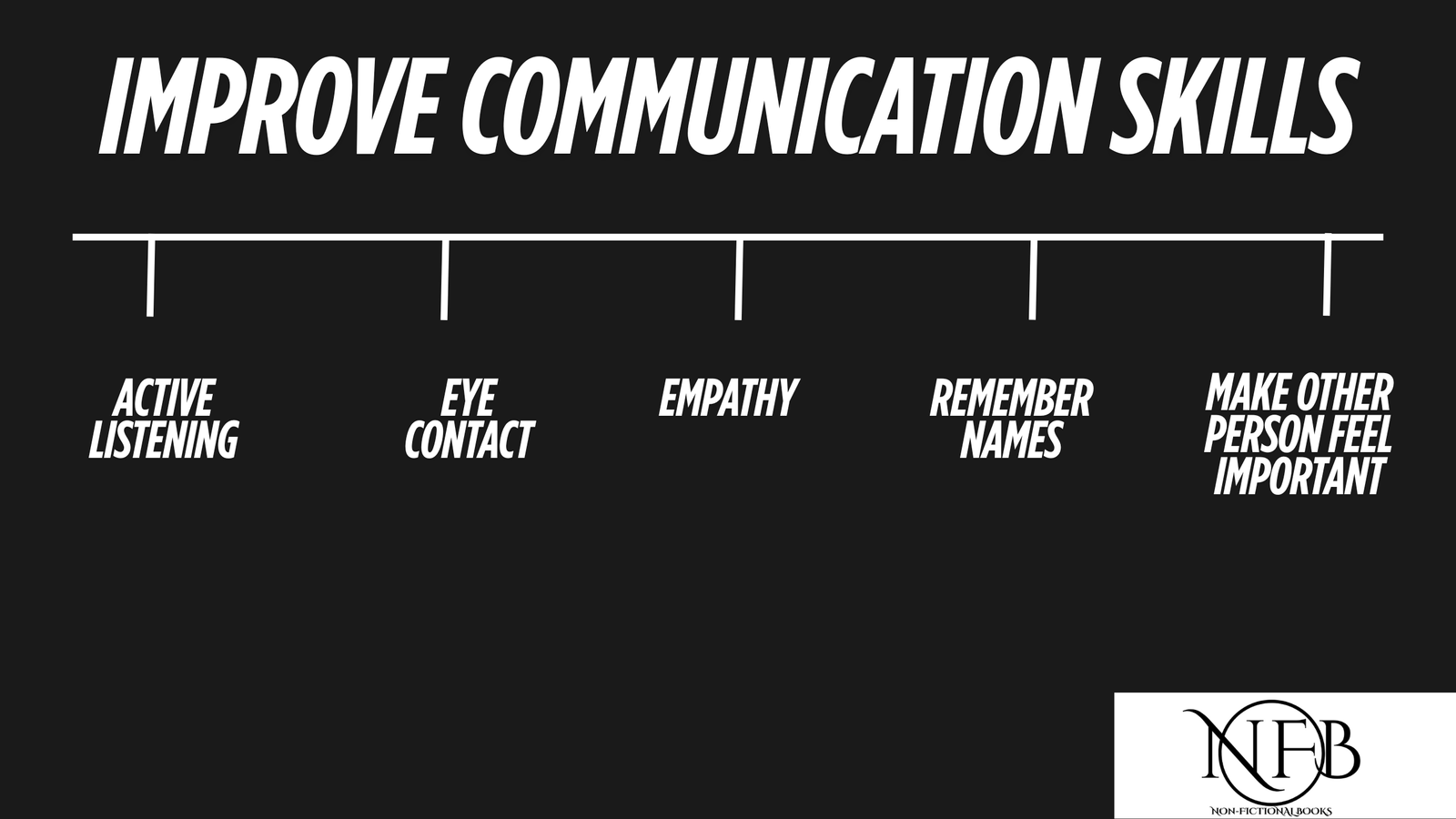Effective communication is something everyone wishes for, but not everyone works towards it because we underestimate its importance. It has a significant impact on both your personal life and career path, as it can make or break deals.
So, let’s talk about 9 communication books every Entrepreneur should read to take their journey to the next level.
Nonviolent Communication
Nonviolent Communication, a practical guide, equips you with the tools to communicate effectively in your day-to-day life and navigate situations where misunderstandings often arise.
The core principles of the book:
Observation: Don’t be in a hurry to judge someone; give the other person enough time and space, and then evaluate everything.
Feelings: Be specific when expressing, so that it gets delivered to the other person as it is. Try saying “I feel happy” instead of “I feel good,” because the definition of “good” may vary from person to person.
Nonviolent Communication reminds us that needs are universal, and the emotions attached to them stem from these shared needs, fostering a sense of connection and understanding.
Requests: It’s a concrete and actionable way we can ask for support in meeting our needs.
The book teaches:
- To have meaningful conversations that fulfill everyone’s needs.
- How to understand and express your feelings while considering the needs of others.
- The more directly we express our feelings and needs to others, the easier it is for them to respond compassionately.
- We can’t be responsible for other’s feelings and reactions, but we are responsible for ours.
Surrounded by Idiots
What you say is different from what is understood. People don’t get us, but until you tailor your communication style to the person you’re talking to, there’s a higher chance that the other person won’t understand you.
According to the book, there are four types of human behavior:
🔴 Red: Also known as the action-taker. To them, goals are more important than anything else. They have high energy, don’t need anyone’s opinion to act, are fearless, and tend to stand out.
🟡 Yellow: Jolly, creative, and funny—but poor listeners who talk too much. They prioritize relationships, are not very productive, and often lack focus. They seek enjoyment and fun.
🟢 Green: Loyal and fond of stability. They prefer to play it safe, are indecisive, and often seek social approval or proof to minimize risks.
🔵 Blue: Also known as the perfectionist. If you’re introverted and analytical, you belong to this group. As introverts, they tend to spend more time analyzing things. However, the downside is that they are not very social.
The book emphasizes that no one communication style is perfect. Understanding, learning from, and adapting to others’ styles is key to effective communication, fostering a sense of empathy and consideration.
How to Win Friends and Influence People
If you’ve heard about networking, the first book that would come to your mind would be How to Win Friends and Influence People. Let’s see the takeaways from this book:
- Become genuinely interested in other people: The author suggests that you can form more meaningful connections in 2 months than in 2 years by focusing on their interests rather than trying to make them interested in you. Being interested in the other person opens up the conversation and gives space to develop the bond.
- Remember names: Everyone is more interested in their name than all the other names put together. If someone forgets your name or mispronounces it, you don’t feel good. On the other hand, if someone remembers your name, it makes you feel instantly connected to that person.
- Always make the other person feel important: There is always something to learn from a person. If you make them feel important and see them as superior, your perception of the person will change, opening up enormous possibilities to learn from them.
Dare to Lead by Brené Brown
Her TED Talk, “The Power of Vulnerability,” went viral in 2010.’As per Brené, authentic leadership also requires values, vulnerability, trust, and resilience.
Widespread vulnerability is associated with weakness, but it is a sign of courage. The author says that vulnerability is the only path to courage, which further gives birth to innovation, creativity, and trust.
She says that there can’t be any situation in which, without uncertainty, risk, and emotions, one could show confidence. And confidence is as contagious as fear.
The author suggests that one thing every leader should change is the notion that not speaking or avoiding a difficult conversation is kind. In reality, ‘Clear is kind, unclear is unkind.’ For instance, if you’re a leader and you’re not clear about your expectations, your team might feel uncertain and stressed. This can lead to misunderstandings and a lack of productivity.
Crucial Conversations
The book teaches you how to make difficult conversations easier.
The book has good depth when it comes to behavior, which helps manage relationships and intensely emotional conversations.
Values:
- Remember your goal: Often, while discussing a topic, we get sidetracked, wherein we start focusing on ‘needing to be right’ or ‘winning the conversation’ rather than ‘what I want for this relationship/conversation.’
- Watch for signs of stress: When you notice yourself getting stressed or angry, take a deep breath, as this will help you stay on track.
- Give yourself more options: This means avoiding the trap of being stuck between black-and-white options. Take a step back from the situation and observe if those are the only two options—in most cases, there are more ways out.
- Check how you see others: Whenever someone goes into fight-or-flight mode, we tend to be more forceful or get frustrated. But the author says that it’s because the other person feels unsafe to talk. They think their point isn’t being valued or considered. So, think about what you can do to make them feel valued and secure, which will help you have more successful conversations.
There are a few more values that the book provides.
How to Talk to Anyone
This book provides 92 techniques to help you communicate effectively when you lack confidence, courage, or struggle to express yourself.
Let’s see a few techniques from the book:
- Talk like a celebrity: According to the Carnegie Institute’s research, 85% of a person’s success is dependent on how well they communicate. Try asking things differently than you currently do—see how that changes the response.
- Use non-verbal cues to make a good first impression: 80% of non-verbal communication contributes to how a person reacts to you when you meet for the first time. So, stand tall—it shows confidence. Avoid guarded movements like folding arms or keeping something in front of your body, as it shows that you’re uncomfortable.
- Master the art of small talk: Open conversational doors and keep people talking. It can significantly help you in your personal and professional career. Starting with small talk and then letting them take the lead can help you unlock and discover a lot of things. The other person would appreciate it if you gave them space to speak, which would reflect you as a good listener.
Influence: The Psychology of Persuasion
The book teaches how to influence people, the art of persuasion, and how to build meaningful connections.
The following are a few ideas from the book:
- Reciprocity: It’s a natural human behavior that if someone does something for us for free, we tend to return the favor or do something in return. Kind behavior or gestures don’t just influence what we do, but also how we feel about the other person.
- Commitment and Consistency: When we commit, we put in more effort and are consistent because of the initial words we gave. This small initial commitment can lead to bigger commitments moving forward because we want to look reliable and stable in our beliefs.
- Social Proof: We often do things after seeing what others are doing. We decide our actions by observing others because we’re not sure what to do ourselves.
- Authority: The more authority you’re perceived as having, the more likely people are to comply with you. Let’s say you’re not feeling well and go to a hospital. Until someone comes up with a doctor suit to treat you, would you trust that person? No right. That’s how authority works.
- Scarcity: Losing something motivates us more than gaining something of similar value.
Pre-Suasion
The book offers a psychological approach to framing your conversations so that the other person is receptive to what you say.
The author notes that individuals skilled at framing conversations tend to focus more on their introductory remarks before making a request, rather than the request itself.
How can one master this tactic of making people receptive?
- Attention: When you give your attention to something, it automatically becomes important—or at least you assume, like the breaking news on the news channel.
- Change the direction of attention: Since everyone’s attention is limited, shifting it from one thing to another allows you to let go of the old thing immediately.
- Using the right questions: A single question can be asked in different ways, and every other question would get you a different answer because the attention shifts depending on how it is framed.
- Grabbing attention: Danger, glamour, and novelty are the three well-known ways to grab attention, as they stand out, which is why everyone pays attention.
- Holding the attention: The best way is by making the conversation around them—everyone loves talking about themselves.
Just like attention, the book also talks about unity and connections.
Never Split the Difference
This book takes a different approach from the rest on the market. The book says that the way to successful negotiation is: Emotional Intelligence + Empathy.
Helping others and solving their problems can also help you solve your own. And this is only possible when you listen actively and pay full attention to what the other person is saying.
Making someone feel heard develops trust, which in turn helps you in negotiations.
Actively listening with tactical empathy can help you make the conversation work in your favor.
Using calibrated questions, such as “How” and “What,” prompts the other person to provide detailed answers, which solves your problem as well.
Conclusion
I hope you find the list of 9 books on effective communication helpful in your life journey and makes you stand apart.
If you’re looking to elevate your skills that would help on your career path, so check out the Books Every Entrepreneur Should Read.

